December 2008 - February 2009

Cold winter day at Crisp Pond
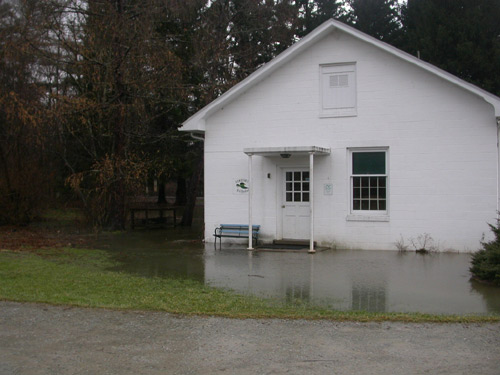
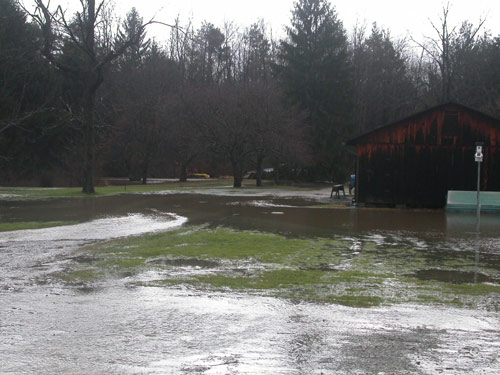
Heavy rains moved through the Ligonier Valley in mid-December, and the second day of rain caused flooding at Powdermill. To the left are photos of the marooned banding lab!
Fortunately, we did not have any water seep into any of the offices at the Powdermill Avian Research Center. Unfortunately, following the rain, temperatures fell sharply resulting in frozen pipes for two days.
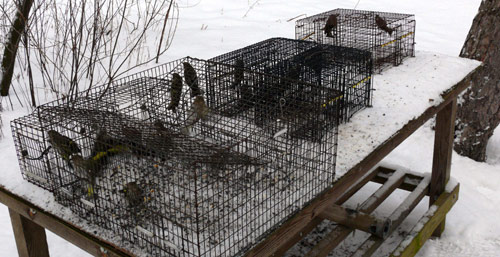
Traps full of siskins.
This winter has been an excellent year for Pine Siskins. The Pine Siskin is the most common of the finches that have winter irruptions to the south, and this winter birders across the eastern United States have witnessed impressive numbers throughout Pennsylvania and as far south as Georgia.
This species has been known to stay on their wintering grounds long enough to breed, which may begin as early as late February. So, we will be examining birds for evidence of breeding here at Powdermill. Siskins are gregarious and, unlike most songbirds, may nest in loose colonies.
Pine Siskins are often aggressive at bird feeders frequently fighting amongst each other, and have been noted being dominant over American Goldfinch, Purple Finch, and may even challenge the much larger Evening Grosbeak.


This winter has not only been an invasion year for Pine Siskins, but also for White-winged Crossbills. Flocks of crossbills have been reported throughout Pennsylvania.
We have seen White-winged Crossbills at the banding lab, but thus far, we have been unsuccessful at capturing any. In fact, this is a species that has never been captured throughout the 48 year history of banding at Powdermill.
After the snow melted White-winged Crossbills have been consistently seen foraging on hemlock cones lying on the ground. Compared to cones attached to trees, many of these cones lying on the ground likely have more seeds within them because they have been under a layer of snow making them previously unavailable to the crossbills.
These photos of crossbills foraging on hemlock cones were taken just a few miles away from Powdermill.
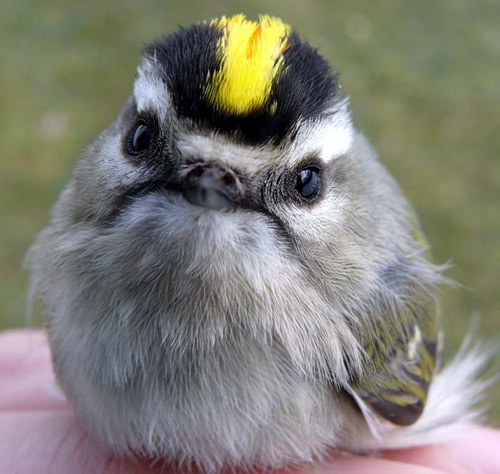
Although not an uncommon winter bird, we don't capture many kinglets during this time of year. The splash of color provided in the crown of this male Golden-crowned Kinglet was a welcomed site.
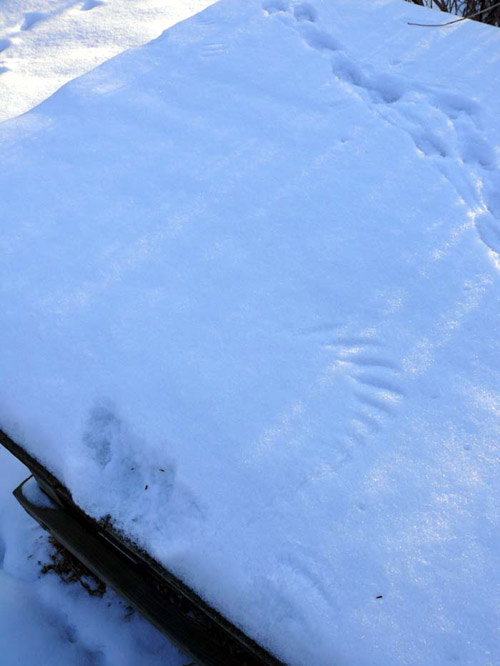
All of the snow this winter provided excellent conditions for tracking animals. Below are a few images that allowed us to identify some of the wildlife that use the banding area during cold winter nights.
The wing and body impression of a Screech Owl that was hunting small mammals eating seed underneath our bird feeders. However, there was no evidence that this foraging attempt was successful.

Mink tracks on the road leading back to the banding lab.
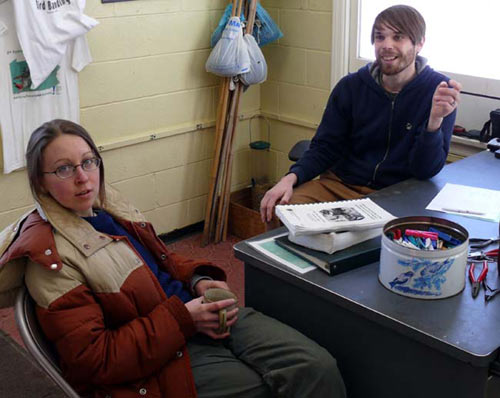
In early February, we were happy have, previous Powdermill bander, Molly McDermott and Matt Shumar (her ornithologist husband) spend a couple of mornings at the banding lab and share their experiences with White-winged Crossbills on the PSU-State College campus this winter.
Few birds were captured over those days, but the conversations were enjoyed!
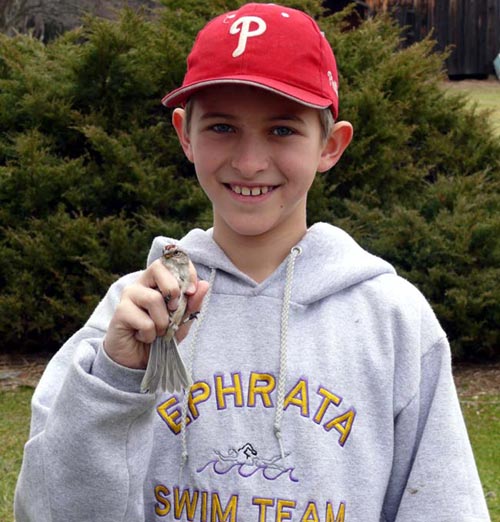
In mid-February the Schlemm family stopped in to check out winter banding at Powdermill on their way into Pittsburgh for a weekend trip and to visit the Carnegie Natural History Museum. Although winter banding can be extremely slow, we captured a number of birds of several species that morning.
Pictured to your left is Darren holding an American Tree Sparrow that had just been banded. The whole family was excited about their experience and we hope Darren shared it with his classmates who were working on a habitat project.

Emma Deleon banding a Pine Siskin.
Throughout the winter we were grateful for the help from several people including Mary Shidel, Emma Deleon, Bob Mulvihill, Bob Leberman, Cokie Lindsay, and Richard Joos. Thanks everyone!
